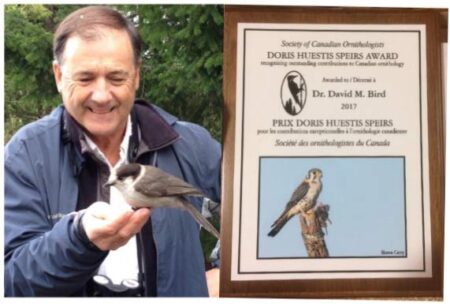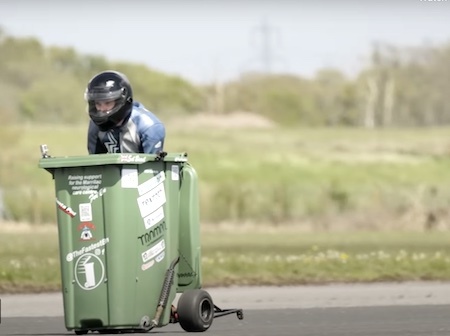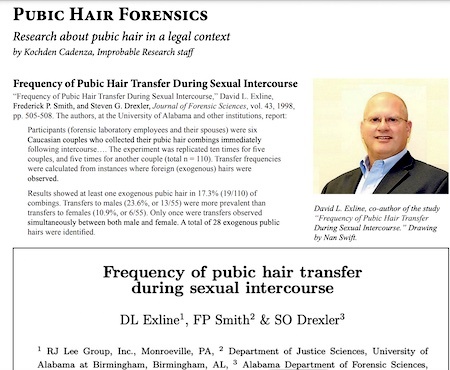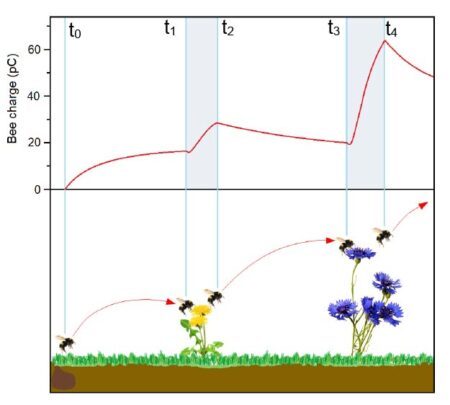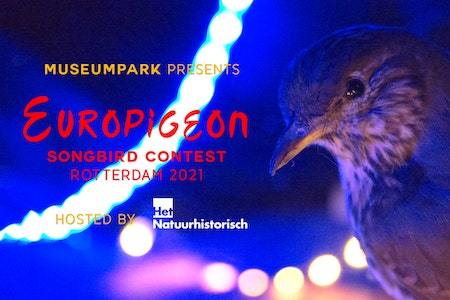Marc Abrahams's Blog, page 79
June 1, 2021
Do Cats Eat Human Remains? [Improbable Research]
What are your pet fears? The review column “Cats Research: Do Cats Eat Human Remains?” is a but one of many featured items in the special Forensics issue of the Annals of Improbable Research. The article is free to download:

May 31, 2021
Professor Bird won ornithology award [nominative determinism]
The Doris Huestis Speirs Award is presented annually to an individual who has made outstanding lifetime contributions to Canadian ornithology. In 2017. the award went to Professor David Bird who is Emeritus Professor of Wildlife Biology and Director of the Avian Science and Conservation Centre of McGill University in Montreal, Quebec.
Research research by Martin Gardiner

May 30, 2021
Podcast Episode #1070: “Kissing and Income Inequality”
The Ig Nobel Prizes honor achievements that make people LAUGH, then THINK.
In the Ig Informal Lectures, some days after the ceremony, the new Ig Nobel Prize winners attempt to explain what they did, and why they did it.
In Podcast Episode #1070, Marc Abrahams presents the 2020 Ig Nobel Prize winners for Economics Christopher Watkins, Juan David Leongómez, Jeanne Bovet, Agnieszka Żelaźniewicz, Max Korbmacher, Marco Antônio Corrêa Varella, Ana Maria Fernandez, Danielle Wagstaff, and Samuela Bolgan. They received the prize for trying to quantify the relationship between different countries’ national income inequality and the average amount of mouth-to-mouth kissing.
The study:
“National Income Inequality Predicts Cultural Variation in Mouth to Mouth Kissing,” Christopher D. Watkins, Juan David Leongómez, Jeanne Bovet, Agnieszka Żelaźniewicz, Max Korbmacher, Marco Antônio Corrêa Varella, Ana Maria Fernandez, Danielle Wagstaff, and Samuela Bolgan, Scientific Reports, vol. 9, article no. 6698, 2019.
Seth Gliksman, Production Assistant
Available on Spotify, Apple Podcasts, Overcast, Google Podcasts, AntennaPod, BeyondPod and elsewhere!

May 28, 2021
Meic Goodyear joins the Luxuriant Flowing Hair Club for Scientists (LFHCfS)
Meic Goodyear has joined the The Luxuriant Flowing Hair Club for Scientists (LFHCfS). He says:
(LFHCfS). He says:
I was a Public Health Intelligence Specialist working at Lewisham PCT from 2003 until I retired in 2014. I have BSc in Physics, and professional qualifications in Computer Science from the British Computer Society, in IM&T (Health) from the NHSIA, and in Public Health from the Faculty of Public Health.
Before moving into the health sector my early career encompassed shipping casualty investigation and stability analysis, leading the team planning the capacity of the Commonwealth telephone network, and commercial systems design. I spent almost seven years at the Clinical Operational Research Unit (CORU) at University College London, researching clinical databases, expert systems for clinical diagnosis and management, and mathematical modelling of clinical trials. I was subsequently appointed Honorary Research Fellow at CORU in 1996. I spent thirteen years in information management in the acute hospitals sector before moving into public health.
From 2003 – 2008 I was Senior Visiting Research Fellow in Geography and Health at Queen Mary University of London. I was elected a Fellow of the Royal Statistical Society in 2000, and was an active committee member of the Health Statistics User Group. I regularly taught data manipulation to candidates for the Faculty of Public Health Part A examination, and retain a particular interest in clear presentation of numerical information in graphical formats.
Meic Goodyear, BSc, LFHCfS
Retired Public Health Intelligence Specialist
Lewes, East Sussex, UK
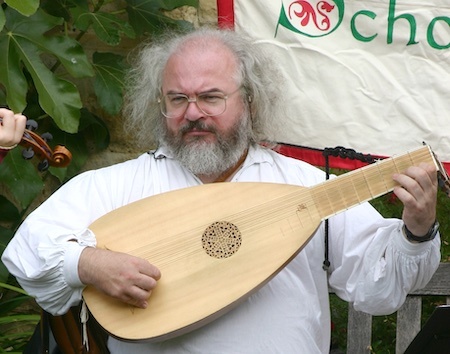

May 27, 2021
A look at how science publishing became a juggernaut industry
Stephen Buranyi explored how the business of publishing science (and other) research reports became such a big business. Buranyi’s article, appeared in The Guardian, in 2017:
Is the staggeringly profitable business of scientific publishing bad for science?
It is an industry like no other, with profit margins to rival Google – and it was created by one of Britain’s most notorious tycoons: Robert Maxwell. By Stephen Buranyi

Here’s an especially lurid passage:
“He said, ‘You have no idea how profitable these journals are once you stop doing anything. When you’re building a journal, you spend time getting good editorial boards, you treat them well, you give them dinners. Then you market the thing and your salespeople go out there to sell subscriptions, which is slow and tough, and you try to make the journal as good as possible. That’s what happened at Pergamon. And then we buy it and we stop doing all that stuff and then the cash just pours out and you wouldn’t believe how wonderful it is.’

May 26, 2021
The motorized wheelie bin and other pleasingly contrived transport
A high-speed motorized wheelie bin is just one of the engineered confections in this delightful video. The video was cooked up, apparently, by Anker, Gravity, and the Guinness Book of World Records. (Thanks to Alanna Li for bringing this to our attention.)
Motors are not everyone’s bag. People who prefer manually operated equipment can indulge in watching videos about the various suits of armor (including the Ig Nobel Prize-winning ones designed to allow the wearer to commune in the mountains with grizzly bears) designed, built, and personally tested by Troy Hurtubise. Most exotic of those is his espionage agent suit:

May 25, 2021
Pubic Hair Forensics (Improbable Research)
The review column “Public Hair Forensics” is a but one of many featured items in the special Forensics issue of the Annals of Improbable Research. The article is free to download:

May 24, 2021
Podcast Episode #1069: “What Sort of Person is Named Rupzóiyat”
In Podcast Episode #1069, Marc Abrahams shows an unfamiliar research study to psycholinguist Jean Berko Gleason. Dramatic readings and reactions ensue.
Remember, our Patreon donors, on most levels, get access to each podcast episode before it is made public.
Jean Berko Gleason encounters:
“On the psychological response to unknown proper names,” G. English, American Journal of Psychology, vol. 27, 1916. 430-434.
Seth Gliksman, Production Assistant
Available on Spotify, Apple Podcasts, Overcast, Google Podcasts, AntennaPod, BeyondPod and elsewhere!

What is the electrical charge of a bumblebee? [study]
The idea that flying insects might be naturally electrified – and that electric charges could be a significant factor in the pollination of plants – goes back nearly a century. (ref. Heuschmann, O. (1929), Über die elektrischen Eigenschaften der Insekten Haare, Journal of Comparative Physiology A: Neuroethology, Sensory, Neural, and Behavioral Physiology, 10(4), 594- 664.)
Dr Clara Montgomery who is an Honorary Research Associate at the School of Biological Sciences, University of Bristol, UK, researches such things – with a specialisation in bumblebees.
It’s not easy measuring the electric charge of a free-flying bumblebee, but Dr Montgomery has experimentally determined, for the first time, that bumblebees do indeed get electrified as they fly about.
“In this thesis I show that bumblebees gain electric charge during flight, and when foraging on flowers. I show that these charges are not limited to bumblebees in the laboratory but can be found on free-flying outdoor bees foraging in a natural environment.”
(Ref. The Electric Ecology of Bumblebees)
If you’re wondering just how charged-up a wild bumblebee can get, a subsequent investigation by Dr Montgomery (ref. Measurement of electric charges on foraging bumblebees (Bombus terrestris) Journal of Physics: Conference Series, Volume 1322, Electrostatics 2019 and Dielectrics 2019 8–12 April 2019, Manchester, UK) has shown that they routinely carry a positive charge – or, put another way, have a deficit of electrons as compared to the environment. It’s quantified in pico Coulombs (one pC = one trillionth of a Coulomb) as 116 ± 159pC, depending on the weather.
Note: The quoted figure for the charge appears to have a larger range of variation (± 159) than the figure itself (116) – perhaps indicating that although it’s normally positive, it can also be negative (i.e. the bee carries excess electrons), or zero.
Research research Martin Gardiner

May 20, 2021
This year’s Europigeon Song Contest
This year’s Europigeon Song Contest will reach its thrilling conclusion on Saturday, May 22, 2021. The contest organizers, in Rotterdam, say:
Five feathered performers [stuffed specimens from the collection of the Natural History Museum Rotterdam] are competing in a truly spectacular song contest. Their shows will be shown online for you to enjoy, Covid-19 and bird flu proof.
You can decide who will win this year’s Europigeon by voting for your favorite songbird. Will it be Philomelos, the Song Thrush? Or will you dance to Starling’s beats and tricks? Who will be.. top of the bill?
You can vote up until the deadline: Saturday May 22, at 10:00 am (Central Europe time).
The winner will be announced at 10:30 am that day, on the radio program ‘Spijkers met Koppen‘, and on twitter at @HetNatuurhist. That twitter feed is also providing updates as the contest progresses.
The competition is organized by a consortium of five of Europe’s stellar museums, all based at Museumpark, a lush attraction for zillions of birds and humans. Among those birds, many years ago, were the two ducks who starred in the historic incident documented in the Ig Nobel Prize-winning ornithology study “The first case of homosexual necrophilia in the mallard Anas platyrhynchos (Aves:Anatidae)“) The museums are:
Museum Boijmans Van Beuningen
Kunsthal Rotterdam
Het Nieuwe Instituut
Natural History Museum Rotterdam
Chabot Museum Rotterdam

Marc Abrahams's Blog
- Marc Abrahams's profile
- 14 followers



